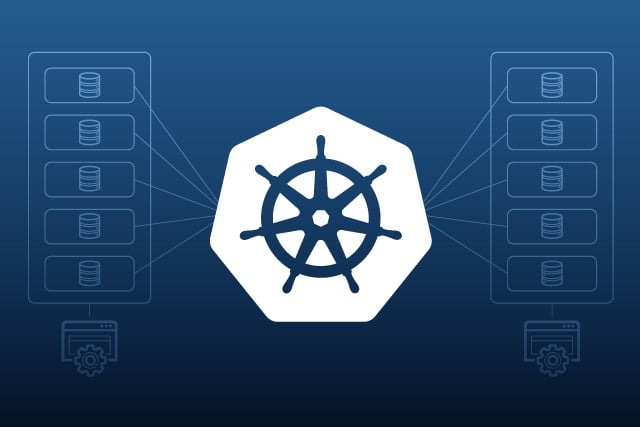
Mastering Kubernetes Networking
- Published on
- Authors

- Author
- Ram Simran G
- twitter @rgarimella0124
In the world of container orchestration, Kubernetes reigns supreme. However, to truly harness its power, one must understand the intricate web of networking that forms its foundation. This blog post will delve into the essential networking concepts that every Kubernetes administrator should master to support production-grade deployments.
The Building Blocks: NIC and VLANs
At the most fundamental level, network communication in Kubernetes starts with Network Interface Cards (NICs) and Virtual Local Area Networks (VLANs).
Network Interface Cards (NICs)
NICs are the physical or virtual components that connect a computer to a network. In a Kubernetes cluster, each node (whether physical or virtual) has at least one NIC. Understanding NIC configuration, including:
- IP address assignment
- MTU (Maximum Transmission Unit) settings
- Bonding for increased bandwidth and redundancy
is crucial for optimizing network performance.
Virtual Local Area Networks (VLANs)
VLANs allow you to segment your network logically without changing the physical infrastructure. In Kubernetes environments, VLANs can be used to:
- Isolate different types of traffic (e.g., management, storage, application)
- Enhance security by separating sensitive workloads
- Improve network performance by reducing broadcast domains
The Naming Game: DNS and DHCP
Domain Name System (DNS) and Dynamic Host Configuration Protocol (DHCP) play vital roles in Kubernetes networking.
DNS in Kubernetes
Kubernetes has its own DNS service that allows pods to discover and communicate with each other using human-readable names instead of IP addresses. Key points include:
- Understanding how Kubernetes DNS works with Services and Pods
- Configuring custom DNS policies
- Troubleshooting DNS issues in a cluster
DHCP in Kubernetes Environments
While Kubernetes itself doesn’t use DHCP for pod IP assignment, understanding DHCP is important for:
- Node IP address management in bare-metal deployments
- Integration with existing network infrastructure
- Automating network configuration for nodes joining the cluster
Ensuring Availability: Load Balancing and HA
Load balancing and High Availability (HA) are critical for production Kubernetes deployments.
Load Balancing
Kubernetes offers several ways to distribute traffic:
- Service types: ClusterIP, NodePort, and LoadBalancer
- Ingress controllers for HTTP(S) traffic
- External load balancers integration
Understanding these options and when to use each is crucial for designing scalable applications.
High Availability (HA)
Implementing HA in Kubernetes involves:
- Running multiple control plane nodes
- Distributing etcd clusters
- Ensuring redundancy in worker nodes
- Implementing proper backup and disaster recovery strategies
The IP Address Puzzle: Subnetting and CIDR Notation
Efficient IP address management is key to scalable Kubernetes networking.
Subnetting
Subnetting allows you to create smaller networks within your larger network. In Kubernetes, this is important for:
- Allocating IP ranges for pods and services
- Designing network policies
- Integrating with existing network topologies
CIDR Notation
Classless Inter-Domain Routing (CIDR) notation is used extensively in Kubernetes for defining network ranges. Understanding CIDR is crucial for:
- Configuring pod and service CIDRs
- Setting up network policies
- Troubleshooting IP conflicts
Beyond the Cluster: Routing Protocols
For large-scale or multi-cluster deployments, understanding routing protocols becomes essential.
OSPF (Open Shortest Path First)
OSPF can be used to:
- Dynamically route traffic between Kubernetes clusters
- Integrate Kubernetes networks with the broader enterprise network
- Improve network convergence in large deployments
BGP (Border Gateway Protocol)
BGP is particularly useful in Kubernetes for:
- Announcing service IPs to external networks
- Implementing advanced traffic engineering
- Supporting multi-cluster and hybrid cloud scenarios
Securing the Perimeter: Firewall Configuration
Security is paramount in production Kubernetes environments.
Access Control Lists (ACLs)
ACLs help in:
- Controlling traffic flow between different network segments
- Implementing defense-in-depth strategies
- Complying with security policies and regulations
Security Groups
When running Kubernetes in cloud environments, understanding security groups is crucial for:
- Protecting nodes and services from unauthorized access
- Implementing fine-grained access controls
- Integrating with cloud-native security features
Keeping an Eye on the Network: Monitoring and Troubleshooting Tools
Effective monitoring and quick troubleshooting are essential for maintaining a healthy Kubernetes network.
SNMP (Simple Network Management Protocol)
SNMP can be used to:
- Collect network performance metrics
- Monitor node and network device health
- Integrate Kubernetes networking with enterprise monitoring systems
Ping and Traceroute
These classic tools remain invaluable for:
- Verifying basic connectivity
- Identifying network latency issues
- Tracing the path of packets through the network
iperf
iperf is excellent for:
- Measuring network throughput
- Identifying bottlenecks in the network
- Validating Quality of Service (QoS) configurations
Conclusion
Mastering Kubernetes networking is a journey that requires a deep understanding of various networking concepts and technologies. By learning about NICs, VLANs, DNS, DHCP, load balancing, HA, subnetting, CIDR notation, routing protocols, firewall configuration, and monitoring tools, you’ll be well-equipped to design, implement, and maintain production-grade Kubernetes deployments.
Cheers,
Sim